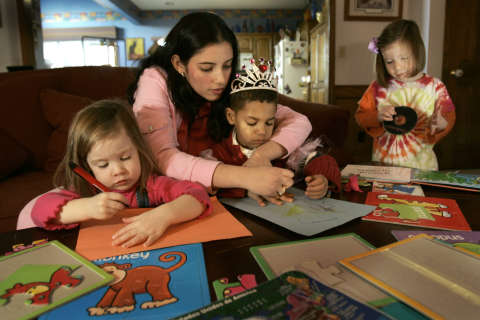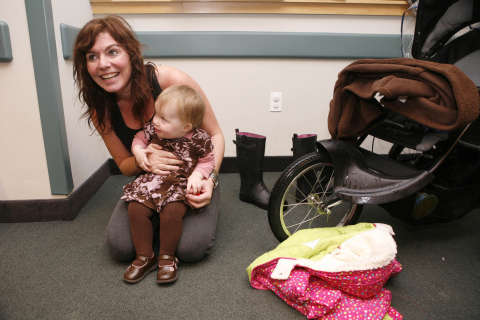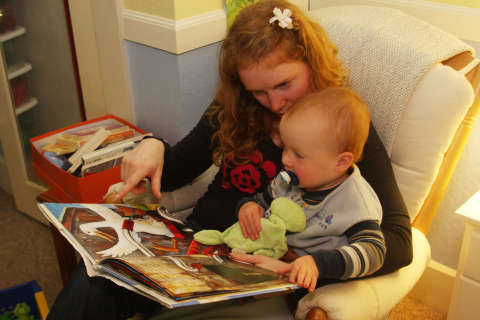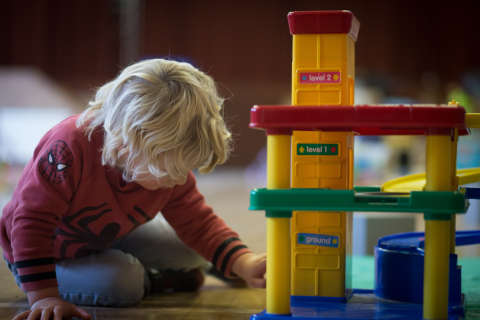The search for affordable, convenient, quality child care is a struggle in the Washington region. The five-part series Child Care Crisis will look at why it’s so hard to find care, and why costs are surpassing college tuition rates. The reports also examine the emotional toll the lack of child care takes on families.
WASHINGTON — If there’s one thing preschool instructor Lindsey Kite wants the public to understand, it’s that early care and education is no joke.
“Some think, ‘Come on, they’re just playing every day. Why do you need to be making this amount of money just to have my kid play?’ But it’s so much more than that,” Kite said.
Between the ages of 0 and 3, a child’s brain produces 700 new neural connections every second, making the first three years of life some of the most important, researchers say.
It’s the time when children learn to how communicate and how to form relationships.
“(They’re learning) a lot of the stuff like compassion and learning how to have feelings for other people when someone’s hurt or angry or upset … and that’s important,” Kite said.
Cost and location are important factors that parents have to consider when researching child care options — but so is quality. Exposing children to quality care from an early age is essential. The fourth report of the Child Care Crisis series looks at the D.C. area’s new focus on quality child care.
Rethinking quality
Child Care Aware of America reports that children who participate in a high-quality care program have higher IQ levels, greater economic success and lower incidences of obesity and chronic illness. DC Appleseed’s research shows that quality care can also help to close the achievement gap between poor and wealthy children.
“More and more, we’re discovering just how critical that time period is,” said Kristin Schubert, managing director of the Healthy Children Portfolio at Robert Wood Johnson Foundation.
“Brain development that happens in that time period, it really does set the stage for lifelong health and well-being,” she said.
Researchers found major discrepancies between what parents consider high-quality care and how the experts define it, according to a collaborative report between Robert Wood Johnson Foundation, NPR and Harvard’s School of Public Health.
The report says that while studies on the state of child care in the U.S. suggest the majority is not considered high-quality, parents have the opposite view.
“There should be a lot of enriching things that happen in that environment and we’re finding that is not necessarily the case in many instances,” said Schubert, who worked on the report.
DC Action for Children Acting Director Shana Bartley is on the same page. She wants the public to start thinking about child care beyond just a trusted place to drop off children. Safe environments are not the same as what Schubert calls “brain-growing environments.”
“When we think about quality, it’s really a multifaceted approach … it’s not just child care, it’s really early care and education — taking care of the whole child,” said Bartley, who added that day care is a place where children learn to eat with others, brush their teeth and even read.
“It’s a safe place, it’s engaging teachers, it’s access to nutritious food, it’s parent support and engagement,” she said.
Measuring quality care
Accessing quality care, however, isn’t always easy. Because there is no national child care system in the United States, there is no national set of quality standards for child care providers.
“But we have a number of groups, including those in the federal government — Health and Human Services, for example — that set forth what you should be looking for and what child care providers should be providing for your child,” Schubert said.
All licensed centers meet basic levels of safety required by the governing state. But some jurisdictions are going one step further and are instituting their own quality standards.
In 2000, D.C.’s Office of the State Superintendent of Education (OSSE) implemented a quality rating improvement system to assess and improve the quality of care in child care settings. The program, called “Going for the Gold,” is a voluntary program for providers who want to serve families that receive government child care subsidies.
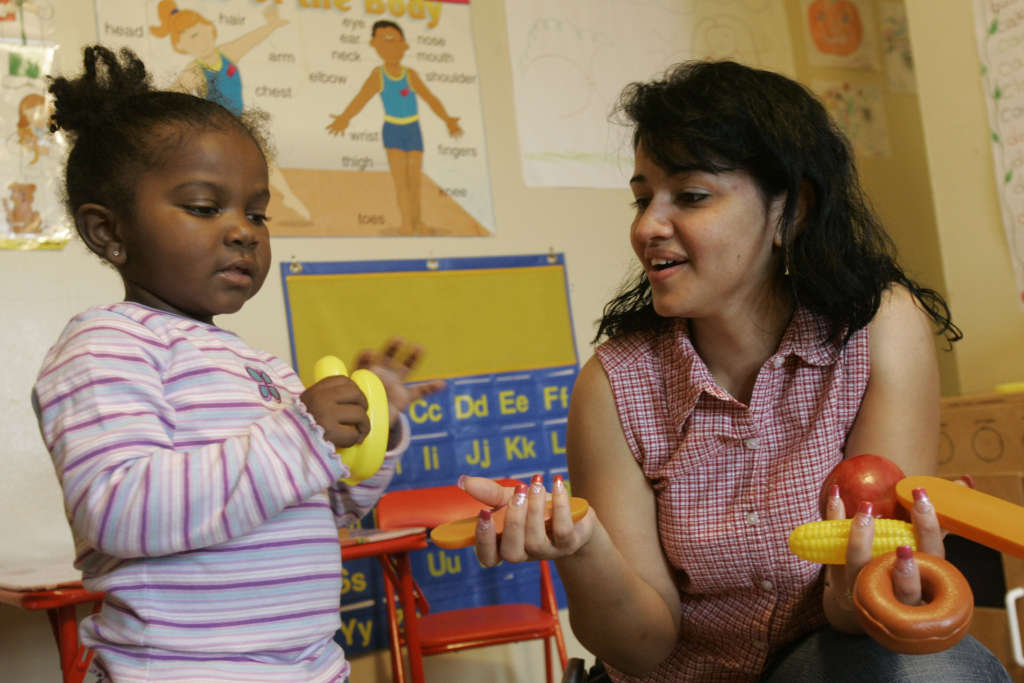
Providers are rated bronze, silver or gold, and the amount they are reimbursed from D.C. is based on their rating. Gold centers, or accredited centers, are reimbursed at a higher rate than bronze centers. In 2015, D.C. had 96 gold-rated centers, 48 silver-rated centers and 74 bronze. In comparison, three years earlier there were 73 gold, 28 silver and 97 bronze.
“The research has been so definitive — especially for our low-income children — that the quality of that care is essential for them being on par with their middle-class and upper-class peers when they enter school,” said Elizabeth Groginsky, assistant superintendent of Early Learning for OSSE.
By spring, Groginsky said D.C. will be offering more on-site support for its licensed centers to keep quality standards high. Providing parents with a transparent and consumer-friendly website so they can find these rated centers is also on the District’s to-do list.
Maryland and Virginia’s systems for measuring quality are similar. Licensed centers can opt-in to a five-tier rating program, and must do so to receive child care subsidies. The providers are rated on standards such as teacher qualifications, curriculum, environment, interactions, and basic health and safety. Star-rated programs are posted to a website (Virginia’s Star Quality Initiative and Maryland Excels), which parents can use as a resource when researching care options.
The source of success
Brigid Schulte, director of Better Life Lab and The Good Life Initiative at New America and co-author of The Care Report, said quality improvement starts with the teachers, but all too often, teachers aren’t rewarded for their important role.
“We learn language from people who matter to us, who mean something to us,” Schulte said.
“What kids really need is a very close, warm relationship with a caregiver … to be able to do that, you really need excellent, well-trained and well-paid caregivers and early care and learning teachers who can create those kind of warm relationships. And we just don’t have that.”
Child care is one of the lowest paying professional fields, which in turn has a direct impact on the quality of care administered. Preschool instructor Kite said low-paying day care centers and preschools often have a revolving door of staff. A high-employee turnover rate means inconsistency in the classrooms.
“It’s not good for the kids, it’s not good for the parents, even for the director who owns the school because as more new people come in, you’re having to reteach everything,” Kite said.
Most centers, however, can’t afford to pay their staff higher salaries, even if they want to. Profit margins are slim — some don’t even make a profit.
Kite is aware of the high costs needed to run a healthy, clean and up-to-code center, but said something needs to be done to encourage workforce retention.
“To be able to give your employees a decent salary is going to keep them happy. And they’re going to stay. That’s just the bottom line,” she said.
The fifth and final report in the Child Care Crisis series examines possible solutions for fixing America’s child care crisis.

